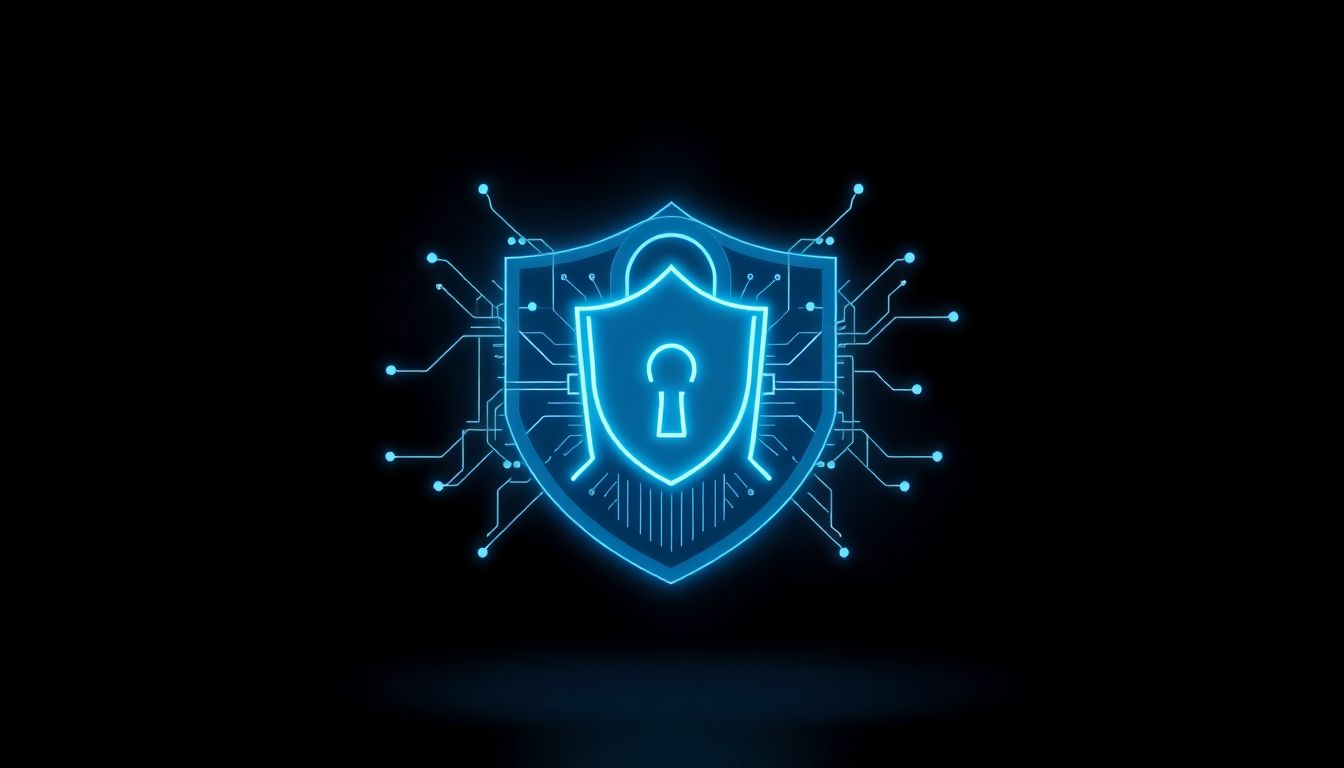We all know how sneaky phishing attempts can be, especially with how clever hackers have become. It’s easy to feel overwhelmed or unsure about spotting these tricky scams. But don’t worry—AI tools are stepping in to help keep your info safe.
If you keep reading, you’ll find out how these AI-driven defenses can make your life a lot easier and protect your business from falling victim to fraud. I’ll introduce you to the top tools, their must-have features, and simple ways to add them into your security setup—all in plain and friendly language.
In just a few minutes, you’ll get a clear picture of how AI phishing detection tools can be your new security sidekick and how to choose the right one for you.
Key Takeaways
Key Takeaways
- AI tools help spot phishing emails by analyzing content, sender behavior, and links in real time. They use machine learning trained on billions of emails to catch even new scams, making detection faster and more accurate.
- Top tools like Microsoft Defender, Cylance, and Barracuda combine static and behavior-based detection, providing features like automatic blocking, quarantine, and regular updates to stay ahead of evolving threats.
- Effective AI solutions feature real-time scanning, behavioral analysis, and integration with existing systems. They reduce false alarms and give security teams clear insights, helping prevent attacks quickly.
- Since AI is now used to create more convincing phishing messages, detection systems must analyze patterns, tone, and anomalies instead of just content to catch sophisticated scams.
- Future AI trends include proactive threat prediction, better user behavior analysis, and faster automatic responses, making defenses stronger and more adaptable to new attack methods.

1. How to Detect Phishing Attacks with AI Tools in 2025
Detecting phishing attacks in 2025 is all about leveraging the latest AI technology to stay one step ahead of scammers. AI tools now analyze email content, sender behavior, and even website links in real time to flag suspicious messages instantly.
One of the easiest ways is to use AI-powered email filters that scan for common phishing signs like urgent language or unusual sender addresses. These tools go beyond traditional filters by examining the tone, context, and subtle patterns that humans might miss.
Look for systems that employ machine learning models trained on billions of emails—these can spot even new, unseen threats with over 99% accuracy. For example, tools like Vade Secure or Proofpoint are leading the way in AI-driven phishing detection.
It’s also smart to implement real-time link scanning that evaluates URLs embedded in emails, blocking malicious sites before you even click. Combining behavioral monitoring with anomaly detection helps identify compromised accounts or unusual sending patterns, increasing your protection level.
If you want to stay safe, adopting AI tools that provide instant alerts and automated response options drastically cuts down the time attackers have to succeed. Remember: the faster you can catch a phishing attempt, the less damage it can do.
2. Best AI Phishing Detection Tools for 2025
Choosing the right AI tools is vital in the war against phishing. Some of the top performers in 2025 include Microsoft Defender, Cylance, and Barracuda.
Microsoft’s security suite uses AI models that analyze email metadata, content, and sender reputation to block phishing emails with high precision. Cylance’s AI utilizes deep learning to detect malicious activity even in zero-day threats, while Barracuda offers real-time URL scanning and behavioral analytics.
Another notable mention is SellAI Tool, which isn’t just for buying and selling AI. They offer select AI-powered security solutions tailored to detect and prevent phishing attacks, making it easier for businesses to integrate trusted AI defense into their existing setup.
When picking an AI detection tool, look for ones that combine static detection for known threats with dynamic, behavior-based analysis for new attack methods. Also, ensure your solution provides regular updates, because phishing tactics evolve rapidly.
3. Key Features of AI Phishing Detection Solutions in 2025
In 2025, the best AI phishing tools come packed with features that make life harder for attackers and easier for defenders. First, real-time threat detection is a must—scanning every incoming email and link instantly, then blocking malicious content before it reaches your inbox.
Another key feature is behavioral analysis, which looks at user actions and email patterns to spot anomalies that suggest a breach or scam. Deep learning models that analyze tone, intent, and context help differentiate between legitimate and suspicious messages.
Effective solutions also include adaptive learning capabilities, meaning the AI gets smarter over time as it encounters new threats. This is critical, given that 67.4% of phishing attacks in 2024 involved some form of AI—scammers are constantly evolving their tactics.
Additionally, integration with existing security tools like SIEMs or email gateways ensures that AI-powered detection isn’t siloed but part of your broader defense strategy. Features like automatic quarantine, user alerts, and incident reporting help keep your team informed and reactive.
Don’t forget: a good AI solution should be transparent about how it makes decisions, offering insights into why an email was flagged. This builds trust and helps your security team respond confidently.

7. The Impact of AI-Generated Phishing in 2025
Since 82.6% of phishing emails incorporate some form of AI technology, attackers are getting craftier and more convincing.
AI-generated phishing messages can mimic human writing styles, making it harder for users to spot suspicious content.
With tools like ChatGPT being used to automate the creation of highly personalized scams, the volume of malicious emails jumped 265% in 2024, and the trend isn’t slowing down.
Hackers now use AI to craft emails that seem genuinely tailored to the recipient’s interests or recent activities, increasing click rates—78% of people open AI-generated phishing emails, and 21% click on malicious links.
This makes it crucial for security tools to analyze not just the email content but also behavioral cues that AI can’t easily fake, like unusual activity patterns or compromised credentials.
To stay ahead, businesses should invest in AI-powered detection systems that can analyze these sophisticated threats in real time, reducing response time from hours to seconds.
8. How AI Can Help Reduce False Positives in Phishing Detection
One common pain point with traditional filters is flagging legitimate emails as threats, which can frustrate users and cause alert fatigue.
AI models trained on vast data sets achieve over 99% accuracy, helping to differentiate between real threats and harmless messages more precisely.
Using deep learning to analyze tone, context, and sender behavior allows AI tools to reduce false positives without letting malicious emails slip through.
For example, if an email from your boss suddenly includes suspicious links or odd language, the system flags it for review, rather than outright blocking it—giving security teams a chance to verify.
Integrating these smarter AI solutions into your email gateway ensures that your team isn’t overwhelmed with unnecessary alerts, saving time and improving focus.
9. How AI Detection Tools Combat the Rise of AI-Powered Phishing
As hackers use AI to craft more human-like scams, detection tools need to get smarter too. AI detection systems now analyze pattern anomalies, tone, and intent to pick up on subtle signs of deception.
By monitoring email metadata, embedded links, and behavioral patterns, these systems catch threats earlier and with higher accuracy.
For instance, if a user receives a phishing email with a convincing tone but the sender’s IP shows unusual activity, the AI flags it immediately.
Faster detection times—down from hours to seconds—mean organizations can quarantine or block attacks before users even see them.
Staying updated on new attack tactics and continually training AI models on fresh threats is essential, as attackers are constantly trying to bypass existing filters.
10. The Future of AI in Phishing Defense: Trends to Watch
Looking ahead, expect AI tools to become more proactive, not just reactive, predicting potential threats based on emerging patterns.
We’ll see more integration with user behavior analytics, helping to identify compromised accounts before damage occurs.
The rise of zero-trust frameworks combined with AI will make it tougher for hackers to succeed, even with AI-crafted messages.
Automation will continue to improve speed, with some systems blocking threats instantly and automatically responding to suspicious activity.
In practical terms, this means businesses should focus on deploying adaptive AI that learns from each attack, constantly sharpening its detection abilities.
FAQs
AI tools analyze patterns and identify suspicious behaviors in emails and websites, allowing quick detection of phishing attempts before they cause harm.
Key features include real-time analysis, adaptive learning, email filtering, URL inspection, and detailed reports to effectively catch and respond to phishing attempts.
Consider factors like ease of integration, accuracy, scalability, user interface, and customer support to find a tool that fits your organization’s needs.
AI tools act as an early warning system, complementing existing defenses by identifying threats quickly and helping security teams respond effectively to malicious activities.